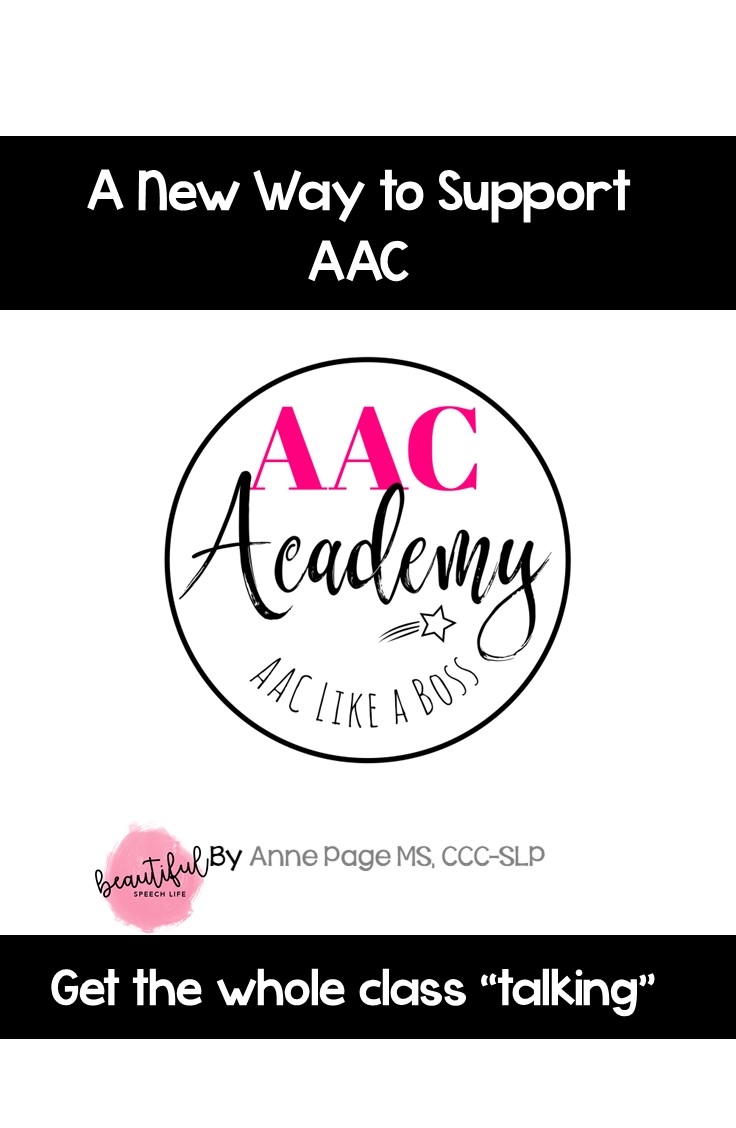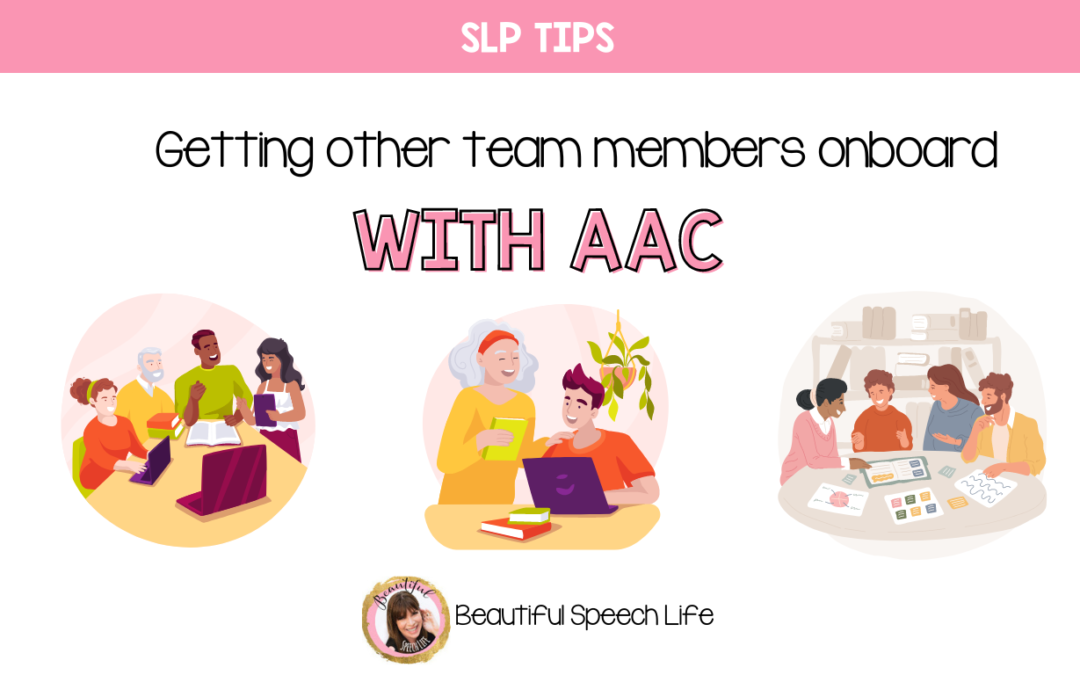
by Anne Page | Sep 17, 2023 | Quick Therapy Tips for the SLP and SLPA, SLP links, TPT Products
We can do fantastic work with our students using AAC but as I’m sure you know AAC is something that has much more impact if it is happening everyday. Which means we need to get colleagues at the school onboard with supporting students with their devices and other resources. But getting other team members onboard with AAC can be challenging.
But if your school is anything like the ones I work with this can be tough. We all know how busy teachers are and asking them to do something extra can be hard. But the rewards for our students make it so worthwhile.
It’s a slow process, so the more you can connect with other team members and build trust, the more they’ll be open to your suggestions. It’s not a one time thing showing them how a device works. Our student and often the staff are learning a new language.
The teachers are going to need support. If we can follow up, listen, collaborate, and create a shared vision, our AAC users will benefit. Set a goal. In 3 of the classrooms I work with we’ve recently set a goal to have devices out daily, modeling a core word or two every day during the daily routine of the teacher’s choice and setting aside time each day for the student to explore their device. You can get my support material for the classroom to help with this here.
Encourage them to keep it simple when they are just getting started with a student with AAC. If they can start by modeling when talking to a child and not worrying about selecting every word that’s a great place to start.
Something that’s been super successful in one school is AAC Club – I have all sorts of info about it on my Instagram. It all started with a student who had a device and was learning yoga. The student expressed an interest in leading yoga; however, nobody could understand her. So, we programmed some yoga poses into her device. Then, we brought in another student who uses a device and… another student… After a while it became a club. Students who use devices get together for 30 minutes a week and the physical therapist and I model different words and then the kids get to check out other kids’ devices. They love it!
Getting people used to seeing and using devices
Fear of the devices and worrying about messing up plays a part in the reluctance of others to use the devices. So we’re making sure that devices are seen in use in a fun way.
This isn’t just with the teachers in the school. We’ve gotten other staff involved with AAC Club., For Halloween one year, the kids took their devices and offered candy to the office staff. The office staff were able to respond on a device, which was a huge win! It was great to see the kids being able to interact with people outside of their classroom.
We are also working on the devices being used in the playground. Working with the physical therapist, we started taking the devices outside for recess, so people see them more. As people see the devices and get to know them better, you can make “gentle” suggestions, like “Why is their device over there on the shelf? It needs to be right here.”
Supporting teachers when they are struggling
Even with the most engaged teachers, they can struggle with AAC. Students using their devices when they should be listening is one of reasons I see teachers putting devices away. The problem with this is that the teacher is effectively silencing the student. If this is happening then can you support the teacher by teaching your students not to “talk” during certain times. You can also make sure that time is scheduled for your students to explore their devices daily.
Getting parents involved
I’ve had less success with parents. They often have so much they are trying to juggle and the device can feel like just one more thing to learn. I’ve led parent support groups and I offer to show them how to use the devices and how they can support their child at home. Unfortunately, very few people take me up on that. But I keep trying and I’ve some parents who are superstars at this! In the ideal situation, the child would have a parent modeling the device at home and then we would be modeling at school, and we would be communicating back and forth. Like, “he touched the ‘go’ when he wanted something to go, and that was incredible!”
You are nearly guaranteed you are going to get at least one teacher who is resistant. Keep persisting! I promise it’s worth it for your students. Don’t forget to listen to what staff and teachers know and think about AAC. This can be easy to do with our enthusiasm as SLPs!
Looking to find out more about AAC? Learn more about my experiences with AAC in my interview with WIDA.
Pin to read later:
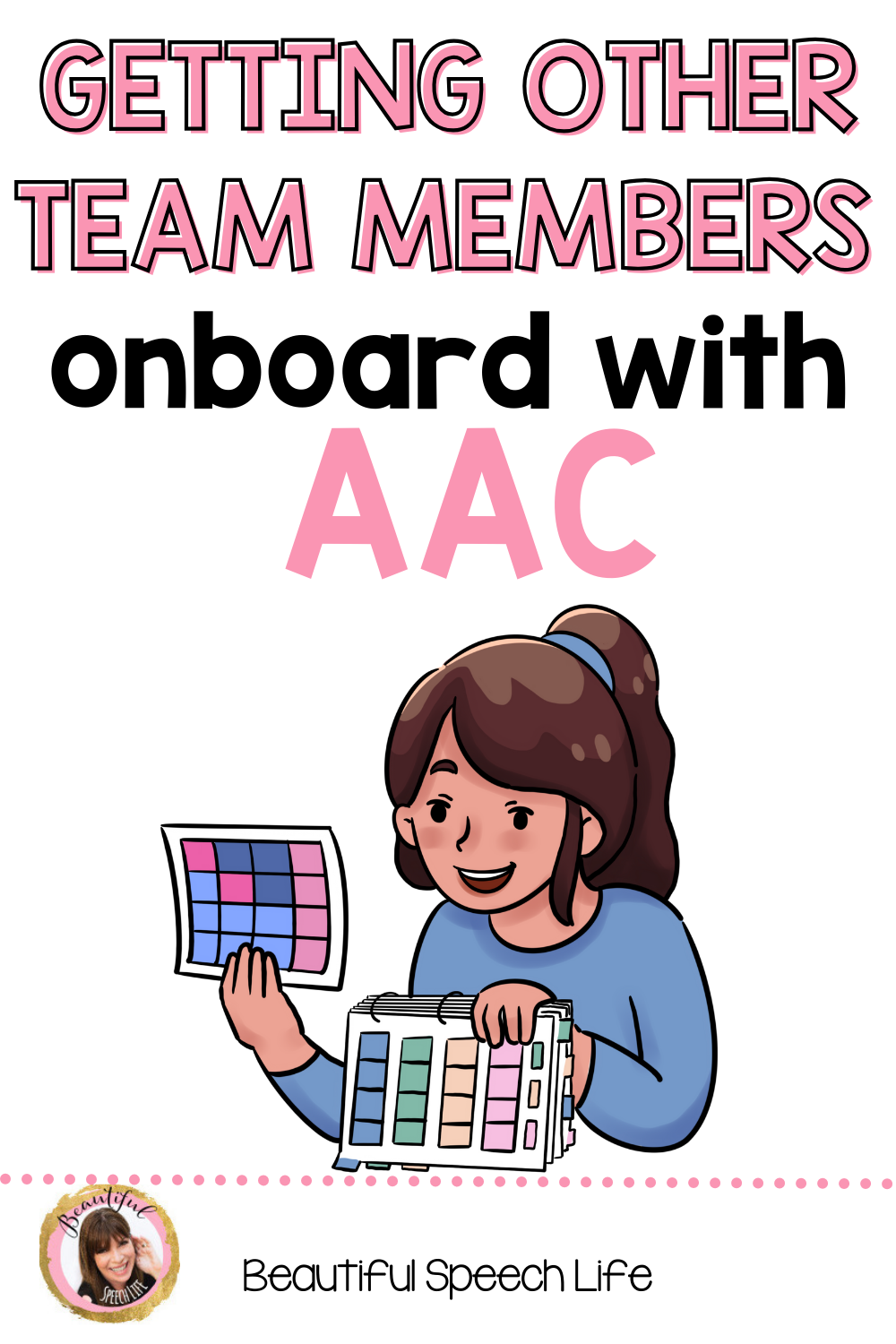
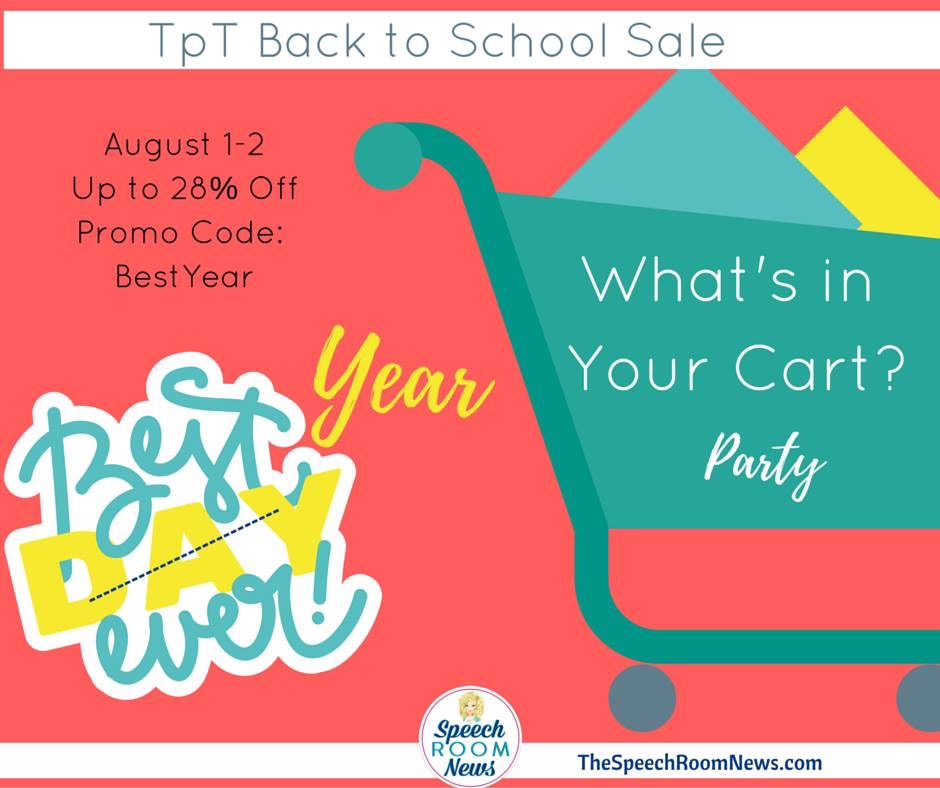
by Anne Page | Jul 31, 2016 | Sales, Therapy Materials and Ideas, TPT Products, Uncategorized
Attention SLP shoppers!
The Teachers Pay Teachers big Back To School sale is August 1 and 2nd. With 20% off, you don’t want to miss this! Plus you get an additional 8% off when you use the promo code BESTYEAREVER.[spacer height=”20px” id=”2″]
It’s time to get strategic about your TPT therapy materials. What’s really going to help you this year and for the years to come? Let me help you find must have items for your SLP bag of tricks. Here are some great materials to get you started from my store. I have no doubt you’ll find yourself reaching for these year after year.[spacer height=”20px” id=”2″]
” I love the organization/layout of this product. I know it will benefit many of my students! Thanks for including the Reading Comprehension stories – my teachers love that I integrate reading in speech all the time!” Buyer[spacer height=”20px” id=”2″][spacer height=”20px” id=”2″]
“I am so excited about this book! I have several students who are working on positional concepts and it just takes so many repetitions to learn the concepts. I love that this book is full of repetitions. I am looking forward to more in the future!” Buyer[spacer height=”20px” id=”2″]
“While I haven’t started my job yet (countdown to my CF position!), I love this planner so far! It looks great, even with my black and white only printer. I love the extra documents (such as the Parent Communication Log).” Buyer[spacer height=”20px” id=”2″][spacer height=”20px” id=”2″]
” This is such a fun and engaging activity! I appreciate you including the different levels of difficulty. Thanks!” Buyer[spacer height=”20px” id=”2″]
” So many of my younger students love anything that has do to with dinosaurs…and who doesn’t love tacos? 🙂 I love this book, but am even happier that such a thorough, applicable and fun speech therapy product was created for it! Thank you so much” Buyer[spacer height=”20px” id=”2″]
And here’s what’s in my cart, I personally know all of these sellers and am really excited to add more of their wonderful materials to my collection.[spacer height=”20px” id=”2″]
[spacer height=”20px” id=”2″]
Happy shopping my friends and here’s to THE BEST YEAR EVER!

by Anne Page | May 3, 2016 | Autism, Blog, Language Activities, Therapy Materials and Ideas, TPT Products
Do you feel like you are aimless or not at the top of you game when working on prepositions?
I can totally relate. I work with a lot of special education students. I tried taking pictures of students under tables, in chairs, next to each other. They enjoyed the activity but it didn’t stick.
I tried having them take turns putting a fun toy on the chair or taking it off the chair. Again fun, but not getting the concept.
I tried it with matching puzzle pieces, with apps, and games. Still no lasting success.
Talk about feeling like a Bad Therapist.
But I kept trying.
Then a combination of learning experiences came together. I noticed that teaching opposite prepositions didn’t work. I noticed that kids got distracted by little details in pictures. I went to an amazing presentation by Dr. Elena Plante, research SLP from University of Arizona and she talked about the importance of errorless learning and teaching one concept at a time.
I learned about fast-mapping. Fast mapping is the psychological term for learning a new concept after a single exposure to information.
Students with SLI and cognitive impairments are not able to fast-map like their typical peers.
So….
I tried making a book with simple visuals and white background. This way the focus was only on the relationship of the objects to each other.
There is a picture strip with words at the bottom of the page, always the same “Where is the _____”(object) The next page always has ______ (target preposition) the ___________ (relationship word).
Object remains the same. For example in “The Under Book” the object is always a banana, it is always under something. Going through the book once gives 12-15 repetitions.
The other important piece is that the skill needs to be taught in more than one setting. So with all of the prepositions books I offer examples for how to extend the new concept into different settings.
I’m still doing more investigating in this area but I can say, I’m having good results with these books. So are the people who have bought them.
” I am so excited about this book! I have several students who are working on positional concepts and it just takes so many repetitions to learn the concepts. I love that this book is full of repetitions. I am looking forward to more in the future!” ~Buyer
Here is the new “Next To Book”. This completes the first three prepositional concepts that children with typical language development acquire at the age of 3: “on” and “under” and “next to”. I’ll be working on the next ones soon.
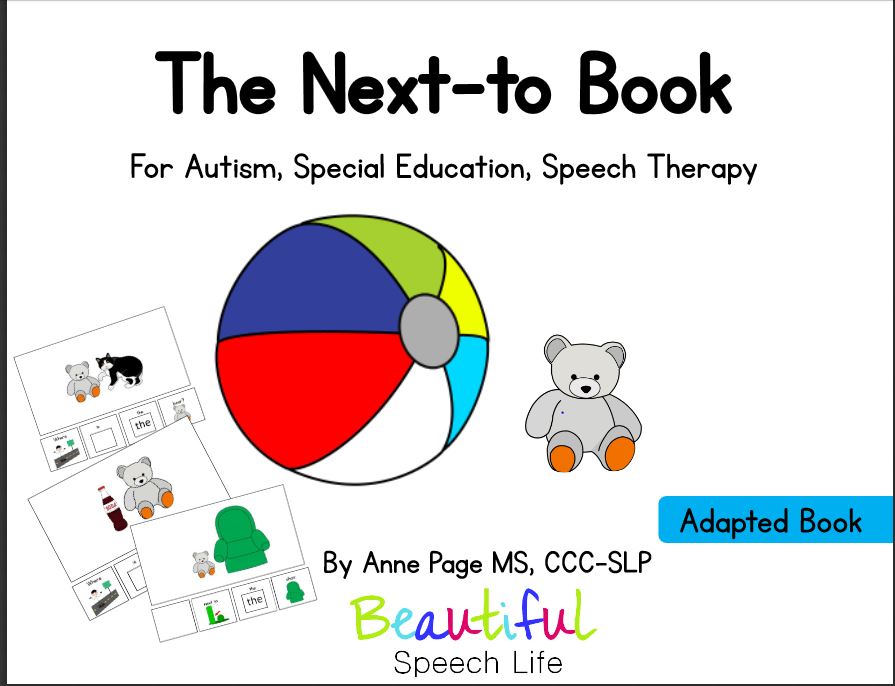
While I was doing my research, I put together this handy little chart. This will be great as a parent/teacher handout and just to keep for your own reference. I’m giving it to you for FREE, just click here. As a Beautiful Speech Life follower, you are getting it early! I already gave it to my TPT followers, but if you missed it, here it is again. I’ll be putting it in my TPT store later. (It’s also included in The Next To Book)
So take charge of those prepositions and SLP Like a Boss,
Anne
P.S. Did you like this post? I’d love it if you’d share it with your friends. Subscribe at the bottom of this so you don’t miss any of the fun.

by Anne Page | Sep 12, 2015 | Blog, Inspiration, Quick Therapy Tips for the SLP and SLPA, Therapy Ideas, TPT Products, Uncategorized
 School is back in full swing for me.
School is back in full swing for me.
Are you like me and tell yourself that you’re going to be more organized this year? (And say it every year?)[spacer height=”20px”]
This year I’m actually doing it-not perfectly of course. But I have to say Teachers Pay Teachers (TPT) has made my life sooo much easier. When I first discovered TPT, I was just downloading freebies left and right and buying products that were cheap.[spacer height=”20px”]
Now, I’m a little more discriminating. Just because something is free or inexpensive doesn’t mean it’s the right product for me.[spacer height=”20px”]
Here are 6 ways that I use TPT to make me more organized and the therapy materials I need at my fingertips.[spacer height=”20px”]
1. Buy staple items that you know you can use every year.
Here is my list for K-3 (yours may look different, you’ll customize to fit your needs)
Articulation rings, flipbooks
Following Directions
Middle School:
Articulation (s, l, r)
Vocabulary: grade level antonyms, synonyms, homonyms, context clues
Inferencing
Grammar: verbs, adjectives
Book Companions
[spacer height=”20px”]
Watch for items that are Core Curriculum Aligned.[spacer height=”20px”]
2. Consider your teaching/therapy style.
Do you like worksheets and paper/pencil activities or do you motivate students through cards and games?[spacer height=”20px”]
Get products that you can easily picture yourself using. Do you need activities with no or low preparation time? Or do you love having colorful,laminated materials and don’t mind cutting laminated items while you watch the latest episode of The Bachelor?[spacer height=”20px”]
Purchase items that will fit into your way of doing things.[spacer height=”20px”]
3. Don’t re-invent the wheel.
You can get planners, data sheets, forms, posters, homework sheets, brag tags, and punch cards on TPT. Get SUPER organized by using them.[spacer height=”20px”]
4. Find your favorite sellers
Once you start purchasing items you’ll find sellers that seem like they are making products just for you. These sellers are gems! Follow them and show them some love by giving feedback on their products. (Especially the freebies)[spacer height=”20px”]
When I need something I save myself time by searching their stores first (less to scroll through than when I do a site-wide search).[spacer height=”20px”]
5. Buy seasonal and holiday items as little treats to keep your sessions fresh and fun. (for your students and for you)[spacer height=”20px”]
Kids get so excited about holidays (so do I). Fun seasonal materials can breathe new life into concepts you’ve been working on.[spacer height=”20px”]
6. Give some thought to how you store your TPT products[spacer height=”20px”]
You want them to be easily accessible. I use Globe-Weiss clear plastic envelopes with colored ziptops (from Amazon). I print the product cover page and place inside to use it as a label. These are really sturdy and can stand on a shelf.[spacer height=”20px”]
So there you have it, 6 easy ways to help you be organized, effective and fun by using TPT. Which tip will help you the most? Leave a note in the comments below. [spacer height=”20px”]
Happy Organizing,
Did you like this post? If you did please share with your friends! And head on over to my TPT store to find some fun organizational and game-base products.
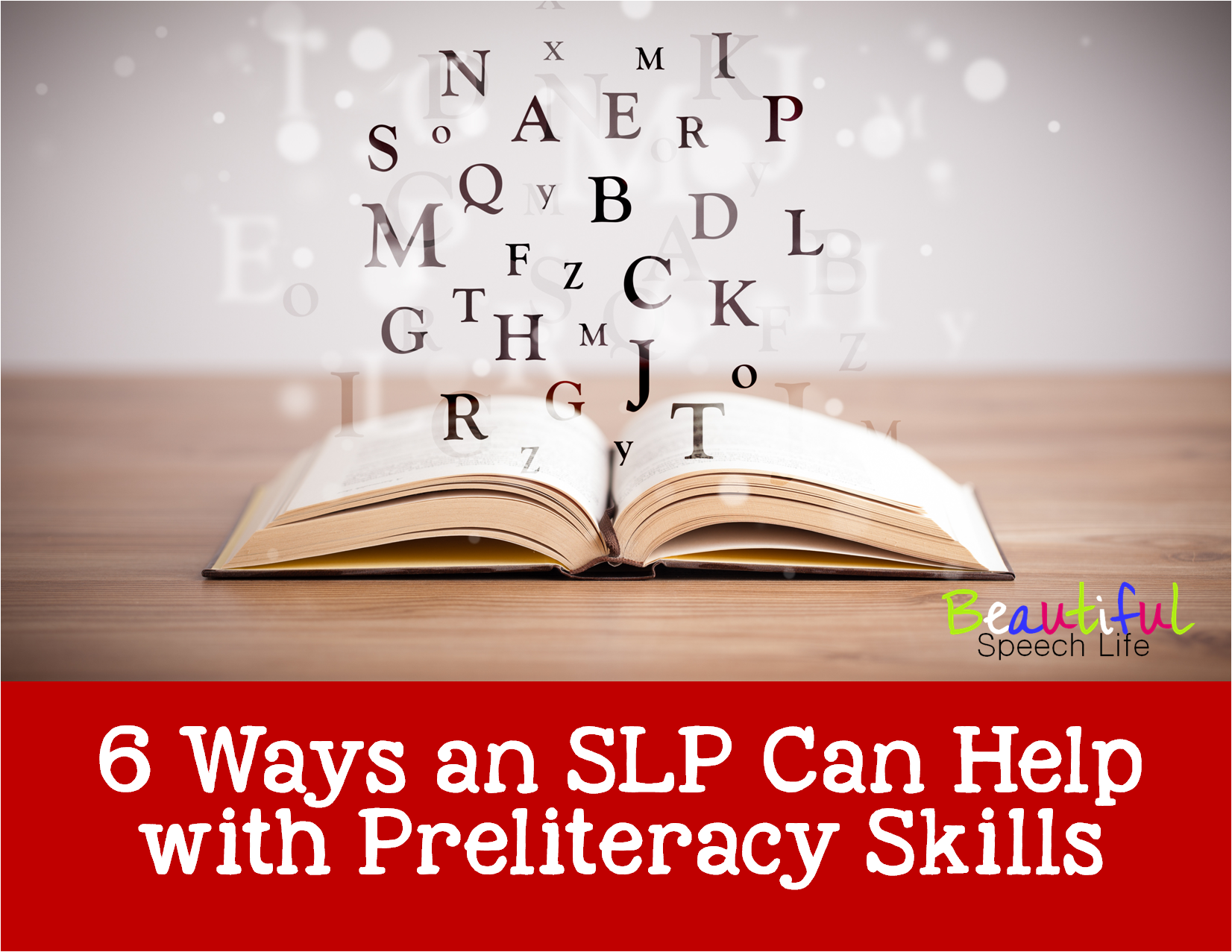
by Anne Page | Sep 3, 2015 | Blog, Therapy Ideas, TPT Products
 So what exactly is preliteracy?
So what exactly is preliteracy?
This term covers all the areas a child needs to get ready to read. It includes important skills like oral language and phonological and phonemic awareness (the awareness of sounds), as well as knowledge of the alphabet and an understanding of common print concepts (print goes from left to right and from up to down on a page, how to hold a book).
A child that has been identified with a speech and/or language impairment (SLI) can be at a higher risk for having reading difficulties. Studies have indicated that as many as 40-75% of children with SLI will have problems learning to read.
A speech language pathologist (SLP) can help not only in the development of oral language but in the following areas as well:
1. Print Motivation
Get excited about what you are reading to a child, enthusiasm is contagious. Talk about why you like the book and what you like about it. Be animated. Let him know that it was your favorite when you were a child or that you read it to your little girl. Help them to make an emotional connection.
2. Print Awareness
When using books in therapy to help develop vocabulary and sequencing skills, take this time to point out the title and the author. Let the child turn the pages. Track with your finger under the words as you read them.
3.Phonological Awareness
Help kids play with sounds to help them understand that words are made up of smaller sounds. Sing songs, read books with rhymes. Play a funny rhyming game with their names.
4. Vocabulary
Need I say more? As SLP’s we are all about expanding vocabulary. Label the pictures. Talk about some words that you think might be unfamiliar. When you come across those words in the text, ask if they know what it means. If not, talk about the words and place them in a familiar context.
5. Narrative skills
Ask questions about the story that can’t be answered with yes or no. Ask him to retell the story; if this is too hard provide a scaffold by asking questions or giving choices.
6. Letter Knowledge
Learning about letters and know what sounds they make is so much fun. Help kids get excited about recognizing the first letter in their name and make a game of looking for letters in their environment. Make playing with letters fun and multi-sensory.
Learning the letters of the alphabet is a big part of Kindergarten. It can be challenging to incorporate the repetition kids need and to keep them interested.
I created this
Letter Recognition and Sound game to do just that. It’s an engaging, colorful activity with two levels of play. Students can apply their knowledge of letters and letter sounds as they play games and interact with letters by flipping over the cards and building a smores.
So there you have it…6 Ways an SLP can help with preliteracy skills and have fun doing it!
If you like this post, sign up to receive emails for more inspiration and ideas every month. Keep up the great work, we are changing lives one child at a time.
by Anne Page | Aug 3, 2015 | Language Activities, Sales, TPT Products

It’s back to school time and Teachers Pay Teachers is making it a little easier to go back.
The big site wide sale is on all day August 4th. Take some time to fill your cart and get up to 28% off. (Pssst….Use the code BTS15).
I don’t know about you but my cart is full! So many great resources for such great prices.
My newest product is all about vocabulary!. I have linked the activities to the common core curriculum to provide 6 lessons that will help increase vocabulary and reading comprehension.

I hope you love it…I included QR codes, photos, and reading comprehension questions to make it fun, multi-sensory, and functional.
Happy Shopping!
Anne




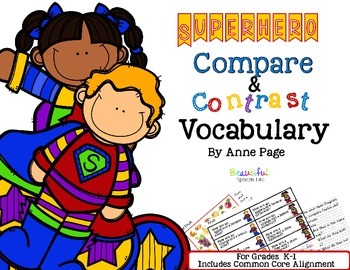

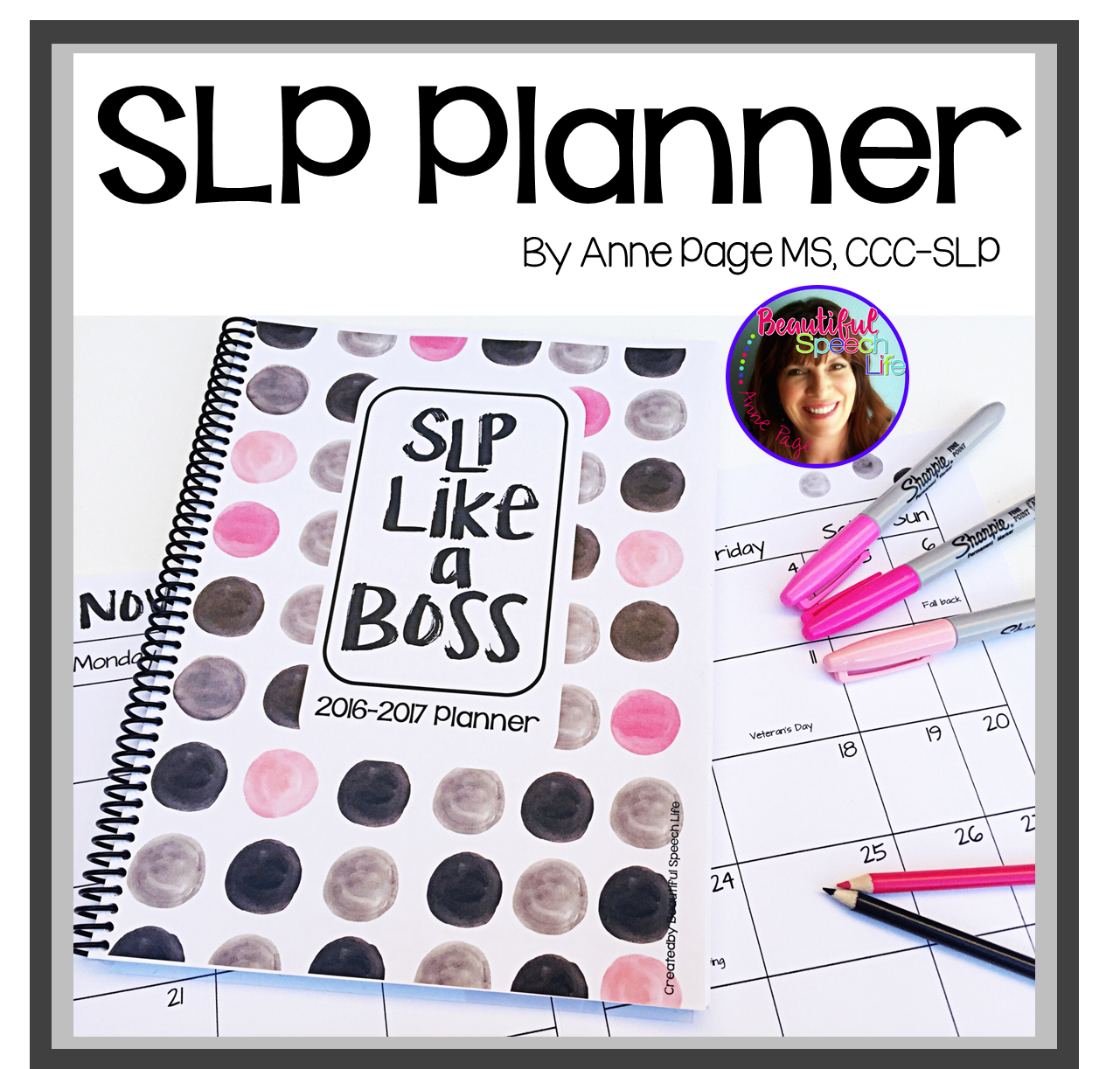
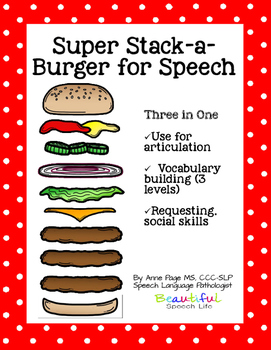
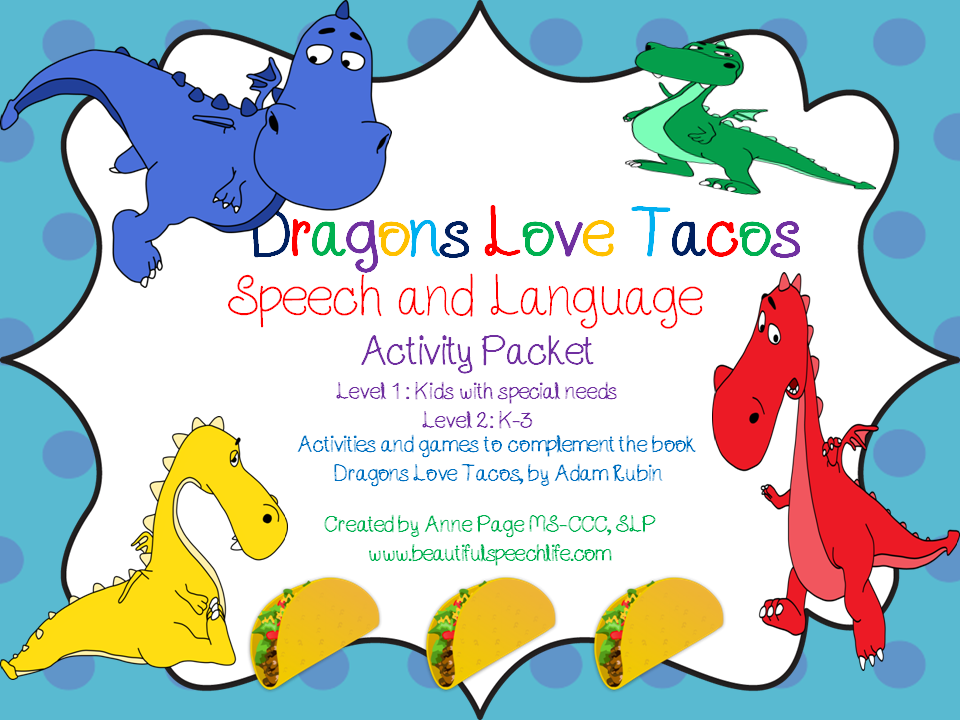
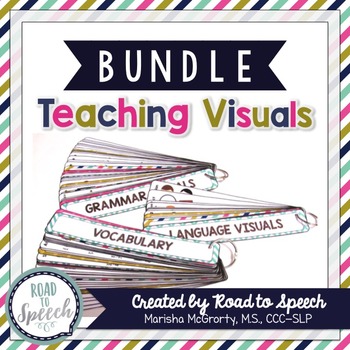


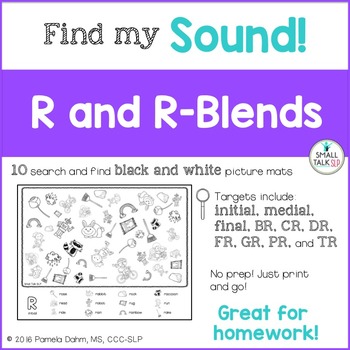
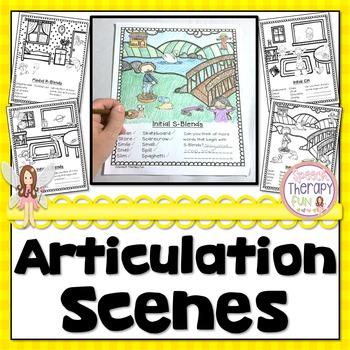



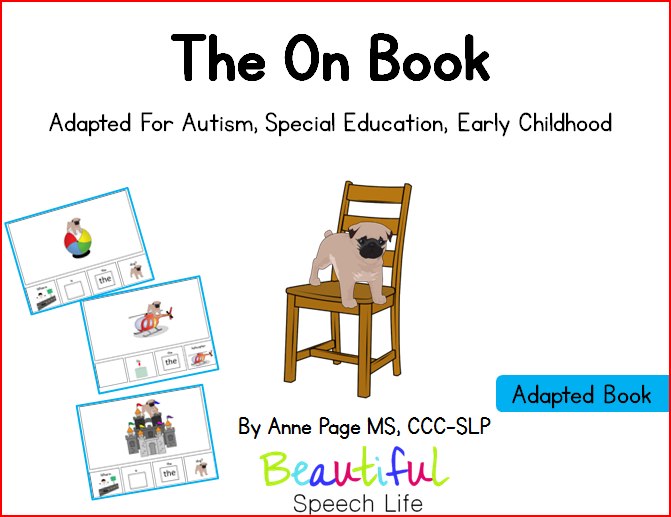






 Hey there I’m Anne Page. I help heart centered SLPs and educators put the fun in functional communication.
Hey there I’m Anne Page. I help heart centered SLPs and educators put the fun in functional communication. 